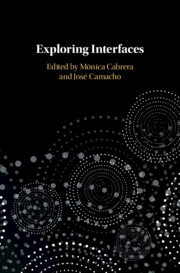I - Syntax–Lexicon Interface
Published online by Cambridge University Press: 03 August 2019
Summary
Transfer, i.e. the influence of the first language (L1) in the interlanguage (IL), is a characteristic phenomenon of the process of second language (L2) acquisition. In the field of Second Language Acquisition (SLA), different theories have been proposed to predict how and in which stages the grammatical properties for the L1 are manifested in the IL. According to the theory of Full Transfer / Full Access (Schwartz & Sprouse 1994, 1996), the grammar of the L1 in its entirety is the initial state of the IL. Afterwards, depending on the properties of the L1 and L2, the linguistic input to which the learner is exposed acts as a triggering factor in the reconstruction of the IL grammar. This restructuring process is conditioned by Universal Grammar (UG); for the most part, the IL complies with the restrictions imposed by UG during this whole process.
Information
- Type
- Chapter
- Information
- Exploring Interfaces , pp. 13 - 108Publisher: Cambridge University PressPrint publication year: 2019
